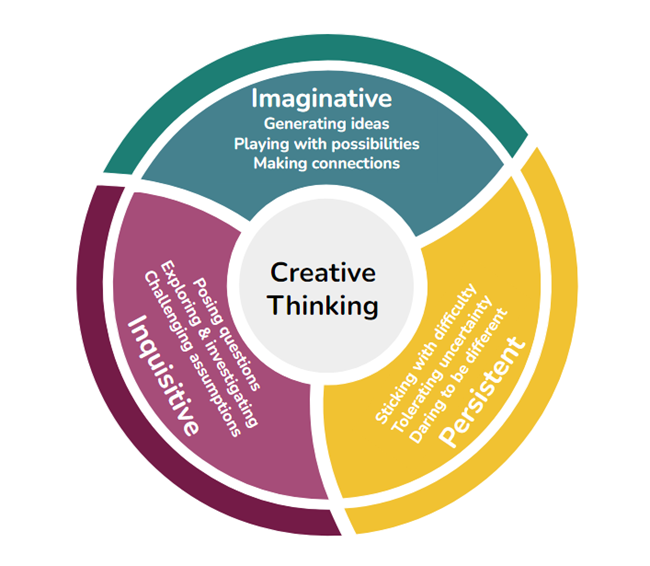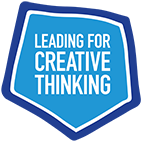Embedding and assessing creativity in schools in England
Rethinking Assessment shows that it is possible for teachers in England to learn how to evidence the development of their pupils’ creativity.
Krstic, S. (2024). Putting Creative Thinking at the core of the English school curriculum: An exploratory study. London: Australian Council for Educational Research UK.
Read the whole report here.
Summary
During the Spring term of 2023, Rethinking Assessment (RA) conducted an exploratory study examining the feasibility of integrating Creative Thinking into five subjects at Key Stages 2 and 3 over the course of one term with a cohort of teachers drawn from a wide range of schools in England. The subjects selected were English, Science, History, Art & Design and Design & Technology. To prepare teachers for the intervention, specially designed CPDL was offered in the Autumn of 2022 and this support continued during the Spring term of 2023. ACER UK, as the external evaluation partner to the study, contributed advice throughout the process and gathered data in 2023 which is published and analysed independently in this report.
The study sought to:
- identify the benefits to schools, their pupils and teachers, of embedding and evidencing Creative Thinking
- consider the effectiveness of a model of Creative Thinking developed by RA and its associated guidance in enabling effective implementation in schools
- reflect on the attempt by schools to embed Creative Thinking within the current system in England and consider what would be needed to do this at scale.
Overall, there was strong support from teachers on the importance of embedding and evidencing creative thinking, with a majority reporting several benefits to pupils, their own teaching, and their own professional development. Reported benefits for pupils included increased engagement in subjects, more teamwork and collaboration with their peers, and a noticeable increase in some pupils’ self-esteem and confidence. Most teachers reported that this was a positive professional experience that encouraged them to continue developing their own creative growth, as well as enhancing their relationships with their pupils.
The study used a simplified version of the five habits model of creativity developed by Bill Lucas and colleagues at the University of Winchester:

Schools strongly endorsed the model of Creative Thinking and found that its clarity enabled them to develop an accessible Common language of Creativity across their schools as well as being able better to integrate Creative Thinking within the programmes of study of their chosen subjects. This may help develop skills that enhance confidence, intrinsic motivation, and engagement are valuable tools for pupils and teachers to thrive and excel in the face of future challenges and opportunities.
In a ‘first’ for England (similar progressions exist in Australia), progression frameworks were developed for each of the three creative thinking habits. You can explore the progression statements here.
Teachers were able to learn three new methods of assessment and the majority of them managed not only to trial these but, in addition, to gather additional data for ACER UK. In terms of assessment methods teachers liked the idea of using portfolios of evidence were able to encourage pupils to gather these. Unsurprisingly teachers found the process of evaluating their pupils’ progress against the progression document challenging (not having had any previous experience of this) and the organisation of teacher moderation sessions inevitably took considerable amounts of time and planning.
The report included three case studies for other schools to learn from.
Reflecting together
1. Do you find the model of creativity used in this study helpful?
2. In which parts of your curriculum do you currently try to embed creative thinking? Where might you focus next?
3. Could you use or adapt the creative learning progressions for use in your school?
4. What could you learn from the three case studies?
